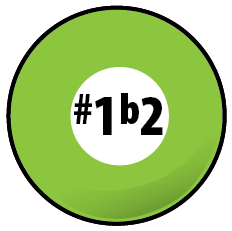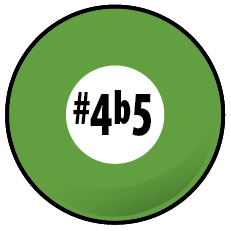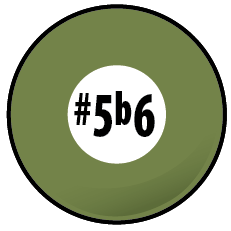~ Two ~ Dorian ~ ~ 2 ~ II ~ ii ~ IX ~ supertonic ~ ~ major 2nd ~ Two chord type ~ ~ a song that starts on a ii -7 chord ~
'So often in our musics ... the penultimate pitch ...'
|
Nutshell / evolution of the artist. If in the songs your If in the songs your playing you're frequently bumping into the Two chord in the cadential motions, and when venturing to Four, ya use a '2/5' to get there ... chances are of your music is leaning towards a more jazzy harmony direction. Thinking in 'Eb' motion to Four Example 1.
For when Two subs for Four in cadential motions, when the 'IV / V / I' (451) becomes more 'ii / V 'I (251), we're transcending towards sleeker; in our intervals and in bass motions, and a different alignment on the wheel of 5th's. Sleeker is faster, faster is brighter and brighter tempos lean us to the 'jazz it up' side of the Americana musical style spectrum; from kids' songs and folk through blues, rock, pop and into the realm jazz and beyond. |
Theory names and what we find on Two: Thinking diatonically, a whole step up from our tonic center pitch lives Two, the 'supertonic', home of all things of the minor hued Dorian minor mode. These theory names of supertonic, Two or Dorian, all directly designate the second scale degree of our 'through the tones' major / minor diatonic scale and no other. Please examine the diatonic position of the supertonic Two. Finding Dorian in the pitches of 'C.' Example 1a. |
|
scale # degrees |
1 |
2 |
3 |
4 |
5 |
6 |
7 |
8 |
C major scale |
C |
D |
E |
F |
G |
A |
B |
C |
chord # / quality |
Imaj7 |
ii-7 |
iii-7 |
IVmaj7 |
V7 |
vi-7 |
vii-7 |
VIII |
diatonic 7th chords |
CEGB |
DFAC |
EGBD |
FACE |
GBDF |
ACEG |
BDFA |
CEGB |
Cool ? Yea there's a lot on this chart. Need a review of its theory ? And with 7th chords we get chord type. |
A coolest part of Two. A very cool aspect of Two is a pure conjured history theory here of how the more traditional mainstay One / Four / Five chord progression morphed into the sleeker jazzier motion of Two / Five / One, which becomes a favored cadential motion in jazz musics through the 1930's and forward For even in jazz blues, while motion to Four in the 5th bar never wavers, the turnaround beginning on bar 9 often features Two to set the motion into motion. |
Of course both progressions have been equally available all along, but as the tempos got brighter into the 40's and beyond, and V7 cycles and modulations more numerous and daring in songs, the full Two / Five / One cadential motion, and the lightning Two / Five 'cell', win the day in the jazz. More on this idea and theory in a new book, The Evolution of Americana Harmony. |
Chord type. From the second degree we also get one of our three chord types; the minor 7th chord type, diatonically built from the major scale. Chord type streamlines the thinking and builds a working 'under the fingers' vocabulary of voicings. So as we consistently bump into 2 5 1, we've some realization options. Thinking in a minor key center, Two is diatonically a half diminished color. so our intervals slightly change and our chord color becomes a bit more deceptive as a regular old Two chord as found in a major key. Mystery surrounds this 'half diminished Two', sometimes referred to as that other worldly sounding "Tristan" chord of 19th century European Romantics. |
|
Stepwise motion. The Two chord is also commonly found in stepwise motions between One and Three. As One and Four figure into all of our musical styles, no surprise that 'stepping' our way there is very, very common. That having these diatonic steps, '1 2 3', could very well encourage the risk taker to slip on in a passing fully diminished 7th chord too; 1 #1 2 #2 3 ... :) |
Where in history. We do have a bit of a pure gold link to the ancient Euro Greeks with the Dorian mode. Although tenuous in that little documentation remains today, even a hint can reveal shadows to pursue from within the ancient mists for those curious about living life in a toga. More recently in medieval times, 1250 and forward, we have what we commonly term as the church modes of which Dorian mode is a pillar. |
|
Interval. The theoretical distance between One and Two is a whole step we term a major second. Example 1a. |
 |
Melody. One very common place we can find the second scale degree in melodies is in the pick up to the beginning of the line. In this old American classic it also closes out the phrase. Example 1b. |
 |
Two as a key center. As a key center, upon the second degree of the diatonic scale we locate the Dorian mode. Overall minor in its tonality, Dorian is a core color of Americana jazz both in composition and blowing. Examine the pitches of D Dorian as extracted from the pitches of the C major / diatonic scale. So, create a scale from another scale? Yep, you guessed it. Example 2. |
|
Notice how we've simply reshaped our core scale formula to create Dorian by moving the first whole step interval to the end of the group? This creates the minor third interval between the root pitch D and its third F. The second key Dorian aspect is found on its 6th scale degree. In Dorian mode, this interval is a major 6th above the root, forever solidifying its unique personality, i.e., minor 3rd / major 6th. Into the wayback we go and find this essential Dorian 'like' melodic gem. Example 2a. |
 |
Dorian like melody? Recognize this melody? "Scarborough Fair" has been with us almost all along now. Learn it here if need be and bask in an essentially Dorian modality. I say essentially here in that while the pitches line up for Dorian, it could very well be more natural minor with a 'borrowed' pitch from melodic minor. Here's the entire 16 bars. Do note the 'Bb' chord that opens the second phrase. And there in lies our rub ... Dorian or Aeolian ? :) Example 2b. |
|
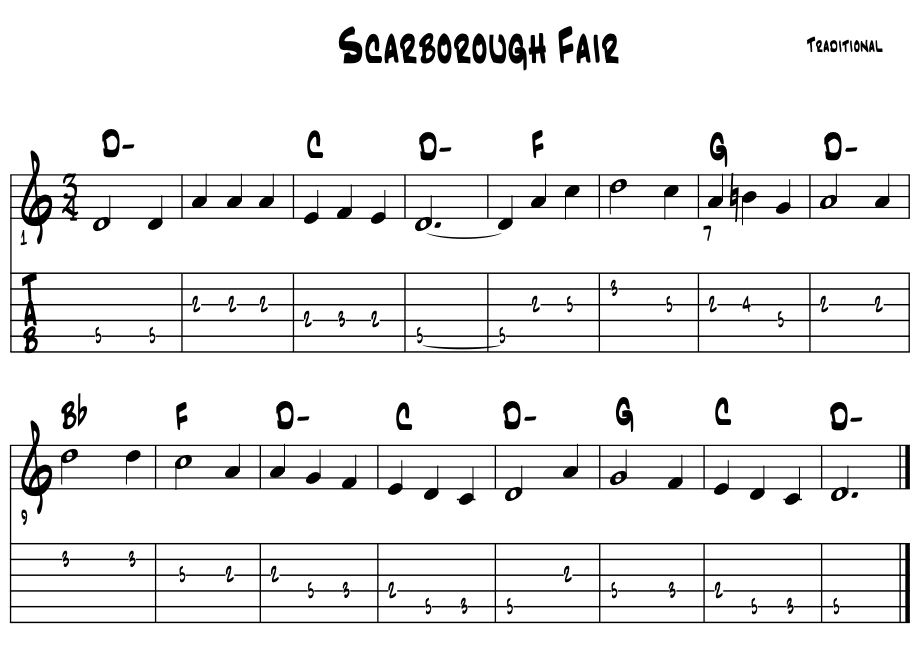 |
Nice line yes? Sure has withstood the test of time. So a theory rub here. In measure seven we've a B natural in the melody with a 'Bb' major chord in measure 9. Is this a problem? Well yes and no. Yes in that 'Bb' is not diatonic to D Dorian so it raises a question or two as to its exact theory. No in that in 'borrow' mode, we have any and all of the 12 pitches we might want to make it sound the way we want, not the theory. Artistic license and all that. |
So, be it as it may, this is the sort of thing that we theorists enjoy to figure out, to look for new harmonic solutions, write another song of our own ... that captures this emotional content and magics of Dorian mode. Its all good. Fortunately, the 'art' does not have to be created in perfect theory terms. For if it captures the essence of the art in our hearts, then surely we be groovy and have won the day. |
True Dorian melodies. Paul McCartney's essential love song "And I Love Her" in 'E', is just a stunning idea that captures Dorian's depth of heartfelt sincerity of undying love and steadfastness of character and purpose in 38 bars of perfect A A B A sonata form with a key change, which upon listening is so poetically crafted you'd might never know it happened till you work the song out. This song could very well be a more modern version of the legend of "Tristan and Isolde." |
|
Our American jazz composers found the modes in the later 50's and into the 60's. Luckily for us, we've solid examples of the Dorian essence from master American jazz composers. John Coltrane's "Impressions" and the bass feature "So What" by Miles Davis are two, and surely among the most played of this modal literature in our jazz library. |
|
Impressions. If there was ever a Dorian energy capture in the early 60's it is rather easily found in this melody. If you're any kind of bluesy rock aggressive leaning louder metal to blues tasty country jazz player with an enthusiastic bass and drummer, and your band needs a new song to go wild with, try Coltrane's "Impressions." Find some of the original recordings and behold. |
|
Super robust and probably unbreakable too, originating any version even vaguely reminiscent of the original sets in motion a potential of expression level you've probably never experienced before, unless you've played the tune of course. Again, especially true if you get to play with impressionable, exciting musical cats. For Coltrane's melody can easily unleash Dorian's ancient natural melodic powers. |
Some of our guitar heros from the 60's cite the influence of Coltrane and Davis' modal work in their own development. It surely did for my bandmates and I during college days. We probably played it almost every show that we could for a couple of years. Heck, folks used to dance to this music it was that much fun :) |
|
Harmony / the triad on Two / stepwise motion. We'll often find the Two chord knitted in between One and Three in our diatonic stepwise motion using triads. In this next idea we get both an ascending and descending example such as in the classic pop song "Lean On Me." Simply stepwise diatonic motion from One up to Four and then back to One. Example 3. |
|
Just moving triads stepwise in a major key yes ? Cool. |
Roman numerals. In this last idea we used upper and lower case Roman numerals to designate our chords. We find this type of labeling of the chords more in academia that in common practice. Knowing the key of the music, while players often talk about a One or Four chord for example, in writing out charts we most often use letter name chord symbols. The Roman numerals come into play when we're analyzing the music or harmony of a song. Upper case denote major chords, lower case minor. This way of designating chords can be at the advanced high school to college level theory thinking. |
Harmony / Two as a chord type. The minor triad built on the second degree of the major scale, when we add its 7th, becomes a chord type. One of three possible core configurations of intervals, the ii-7 is a cool and sleek middleman between the restive tonic and its dominant V7 chord tension. ~ Two Five One ~ ~ ii-7 to V7 to I maj 7 ~ ~ minor 7th to V7 to major 7th ~ D - 7 to G 7 to C maj 7 |
Tension / release. As part of the essential Two / Five / One cadential motion, the Two chord sets in motion our initial direction or tendency to move towards the tonic stability of a major chord in a major key center. Examine the intervals of our Two chord type and a few of its common moveable, root position voicings. Example 3a. |
Two chord type intervals |
common ii -7 / Two chord voicings |
|
|
Any look familiar? Really just basic voicings from the lower three strings. Fully movable as a unit, while there's more shapes to discover, these four feed the bulldog. |
Two / Five / One. The Two / Five / One chord progression is an essential component of so much of the Americana sounds we love. While stylistically it mostly lives in the jazz world, it does make its way into pop and occasionally in blues and rock. Loved by players for its sleekness and substitution flexibility, Two / Five / One is perhaps our best way to cadentially and convincingly change key centers, i.e., to modulate, especially even at a moments notice. Here in C major using core, root position voicings. Example 4. |
|
 |
Evolving Two into Five / Five of Five. Another popular component found on Two is what we term a Five of Five motion, simply a cycling of dominant chords (V7 chord type) by interval of the perfect fourth often termed 'backpedaling.' 'Five of Five' means just that. That each chord is the Five chord, built on the fifth scale degree, of the chord we are moving towards. Thus our root motion becomes; the pitch D is the fifth scale degree of G, G is the fifth of C, C is the fifth of F etc. |
In our American musics, we can hear this motion originating in the Ragtime era and carried forward. Standard songs such as "Sweet Georgia Brown" from 1925 are created with an extended Five of Five harmonic cycle. Here's Two's musical component features with Five of Five in the last bar. Example 5. |
|
 |
History of V of V. Five of Five is simply a first evolution level move away from diatonic harmony. All we are doing here is morphing our diatonic Two minor 7th chord into a Five 7th chord, a dominant type chord. This motion most likely originates in Americana musics during the ragtime era. For in popular songs such as "Maple Leaf Rag" by Scott Joplin, we hear this Five of Five cycling as well as other diatonic chords in the progression, morphed from a Two minor 7th type into a dominant Five 7th type and vice versa. |
|
We'll see this Five of Five motion eventually evolve into the diatonic Two chord in later decades as tempos accelerate and there is more modulation within a composition. Composers now a days can recreate olden times sounds (cliche) with using this type of harmonic motion. There is also a ultra modern jazz version of this concept whereby all of the chords in a song are converted to dominant chords in the soloing sections. Here's just V 7 of V7 to One motion first followed by its softer, diatonic Two / Five / One version. Example 6. |
In this next idea, we'll cycle V7 chords by the interval of a perfect fourth. This forms the common harmonic cycle or 'bridge' section of what jazz players know as rhythm changes. Example 6a. |
In this next idea, we simply precede each chord with a V7 chord a half step above our target chord. This is part of our harmonic modernization process that has some current vogue in jazz over the last couple of decades or so. Here we use the basic Two / Five / One motion to get a sense of the possibility. Example 6b. |
Well almost every chord. It's hard to make sense of these elements in cadential motions as that's really not their intent. Which is more directed to obscure the tonal direction or aural predictability and suspend the tonal gravity created by a composition's tonic center. |
In this next evolution of Two in its Five of Five role, each of the chords become dominant type chords. Once the inversion / colortone process kicks in, and we bump up the tempo to over 200 or so, it becomes what I often term the chromatic blur. Example 6c. |
Perhaps the most complex? The first two measures of this last idea is near the top of where our harmonic progressions have evolved these days. We've ridden the V7 color to the outer limits while still retaining a sense of tonal center. What's missing from the last few evolution examples here is of course a melody, which in itself can be the decider of all these things about tonality, direction and the story line of the music. |
So we get this level of V7 of V7 of V7 in the theory, and everything that shakes out in between, to harmonize our melodies. For any one pitch or phrase of our melody can dictate what the chord will be. Cats will often call this 'harmonizing the melody' and its been solidly around now for nearly 500 years. |
Written chord and what gets played. For advanced cats and depending on the gig, what is written and what gets played might not line perfectly up. In the last ideas we might see vanilla V7 chords written, but can hear anything but that in the realization of the written symbols. It's just what it is in the performance of modern jazz, all depending on who is in the band. |
In deciphering the tones to what they actually are in theory, two essentials prevail; the ability to spell chords and understanding their basic inversions. Are you cool with these two theories? Struggle through their learning process till you get it and chances are they'll be yours forever :) |
In the minor tonality. In a minor key our diatonic Two chord takes on a unique coloring, mostly essential to the jazz leaning artist. Diatonically based on a diminished triad, most often we add its seventh to create the 'half diminished chord' or '-7b5'. Its also fairly common to see inversions of this chord in the blues as a substitute chord voicing. Here's these versions of Two / Five / One in A minor, our relative minor key to C major. Please examine their letter name pitches and chordal sound in resolving motions to One. Example 7. |
scale # degrees |
1 |
2 |
3 |
4 |
5 |
6 |
7 |
8 |
C major scale |
A |
B |
C |
D |
E |
F |
G |
A |
chord # / quality |
i-7 |
ii-7b5 |
IIImaj7 |
iv-7 |
v-7 |
VImaj7 |
V7 |
viii |
diatonic 7th chords |
ACEG |
BDFA |
CEGB |
DFAC |
EGBD |
FACE |
GBDF |
ACEG |
Kind of 'dirgey' huh? Although there is a bit of a gospel amen quality to it all thanks to the two pitch tritone within. While both minor Two chords share the same diminished triad, the difference of course is in the quality of the 7th. Which in this case adds a major 3rd interval to the mix. The half diminished 7th or 'min7b5' is pure diatonic, so not uncommon really, especially in blues and jazz. |
We'll surely come across this half diminished chord down the road a bit. As you can probably see from the root B in the last example, this half diminished chord is also the diatonic chord built on Seven in our major keys. And once back in a major key, takes on V7 qualities due to its tritone intervals. |
Starts on Two. Perhaps the easiest way to kick off some 'forward motion' is to start a song and its chord progression on the Two chord. . |
Review. So lots of cool and important components built upon and generated from Two. Its close proximity to One generally means we'll bump into as we come and go from the tonic. When we move it up an octave and it becomes the 9th, it'll also have some cool and potentially absolutely essential spots in the music we love to create. Lookin' for 'chock full of 2/5's ... ?'
|
"What we play is life." |
wiki ~ Louis Armstrong
|
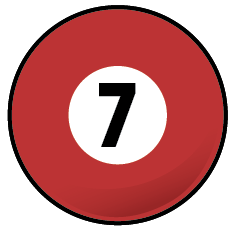 |
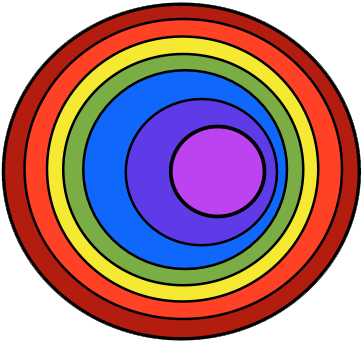 |
|||||||||||
 |
 |
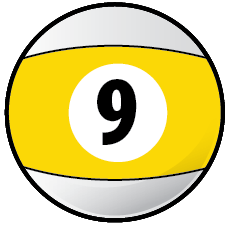 |
 |
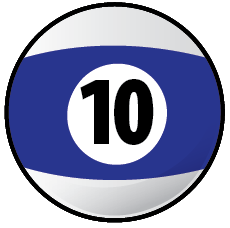 |
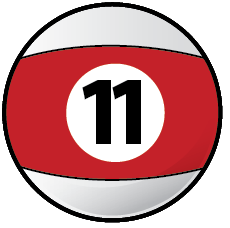 |
 |
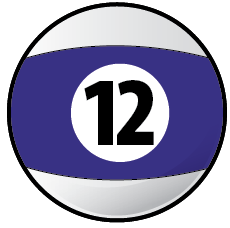 |
 |
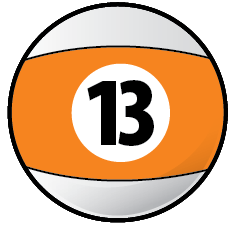 |
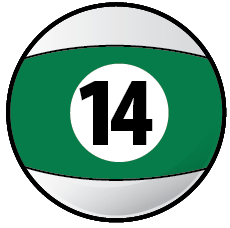 |
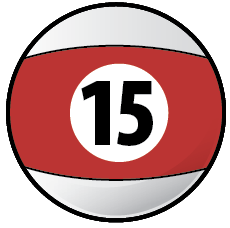 |
 |
References. References for this page's information comes from school, books and the bandstand and made way easier by the folks along the way. |
Find a mentor / e-book / academia Alaska. Always good to have a mentor when learning about things new to us. And with music and its magics, nice to have a friend or two ask questions and collaborate with. Seek and ye shall find. Local high schools, libraries, friends and family, musicians in your home town ... just ask around, someone will know someone who knows someone about music and can help you with your studies in the musical arts. |
|
Always keep in mind that all along life's journey there will be folks to help us and also folks we can help ... for we are not in this endeavor alone :) The now ancient natural truth is that we each are responsible for our own education. Positive answer this always 'to live by' question; 'who is responsible for your education ... ? |
Intensive tutoring. Luckily for musical artists like us, the learning dip of the 'covid years' can vanish quickly with intensive tutoring. For all disciplines; including all the sciences and the 'hands on' trade schools, that with tutoring, learning blossoms to 'catch us up.' In music ? The 'theory' of making musical art is built with just the 12 unique pitches, so easy to master with mentorship. And in 'practice ?' Luckily old school, the foundation that 'all responsibility for self betterment is ours alone.' Which in music, and same for all the arts, means to do what we really love to do ... to make music :) |
 |
"These books, and your capacity to understand them, are just the same in all places. Always bear in mind that your own resolution to succeed, is more important than any other one thing." |
|
Academia references of Alaska. And when you need university level answers to your questions and musings, and especially if you are considering a career in music and looking to continue your formal studies, begin to e-reach out to the Alaska University Music Campus communities and begin a dialogue with some of Alaska's finest resident maestros ! |
|
~ |












